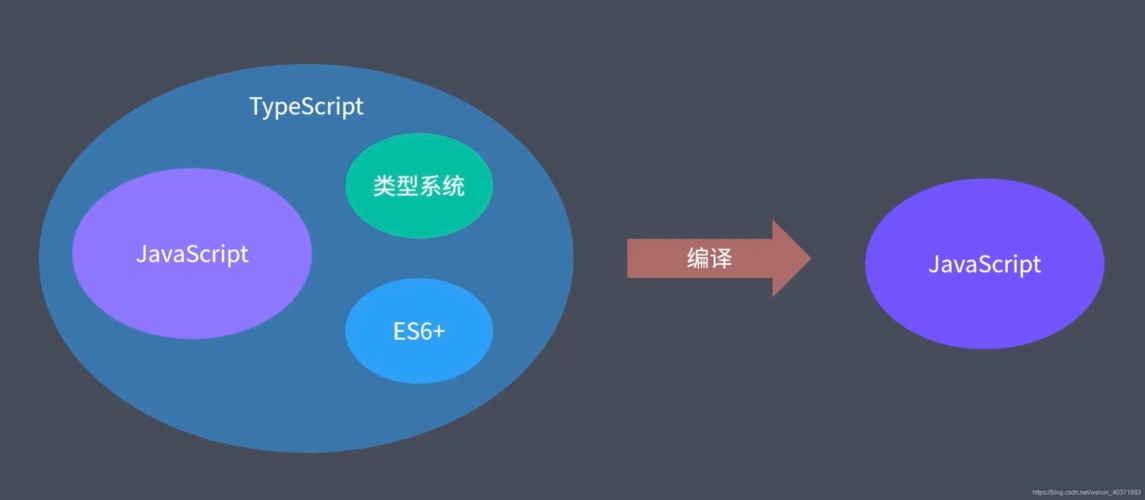
前言
力扣题目:2622.有时间限制的缓存
语言:typescript
本文是该题目的众多方法之二
如果内容有不对的地方,恳请指正
题目
编写一个类,它允许获取和设置键-值对,并且每个键都有一个 过期时间 。
该类有三个公共方法:
set(key, value, duration) :接收参数为整型键 key 、整型值 value 和以毫秒为单位的持续时间 duration 。一旦 duration 到期后,这个键就无法访问。如果相同的未过期键已经存在,该方法将返回 true ,否则返回 false 。如果该键已经存在,则它的值和持续时间都应该被覆盖。
get(key) :如果存在一个未过期的键,它应该返回这个键相关的值。否则返回 -1 。
count() :返回未过期键的总数。
示例 1:
输入:
actions = [“TimeLimitedCache”, “set”, “get”, “count”, “get”]
values = [[], [1, 42, 100], [1], [], [1]]
timeDeays = [0, 0, 50, 50, 150]
输出: [null, false, 42, 1, -1]
解释:
在 t=0 时,缓存被构造。
在 t=0 时,添加一个键值对 (1: 42) ,过期时间为 100ms 。因为该值不存在,因此返回false。
在 t=50 时,请求 key=1 并返回值 42。
在 t=50 时,调用 count() ,缓存中有一个未过期的键。
在 t=100 时,key=1 到期。
在 t=150 时,调用 get(1) ,返回 -1,因为缓存是空的。
示例 2:
输入:
actions = [“TimeLimitedCache”, “set”, “set”, “get”, “get”, “get”, “count”]
values = [[], [1, 42, 50], [1, 50, 100], [1], [1], [1], []]
timeDelays = [0, 0, 40, 50, 120, 200, 250]
输出: [null, false, true, 50, 50, -1]
解释:
在 t=0 时,缓存被构造。
在 t=0 时,添加一个键值对 (1: 42) ,过期时间为 50ms。因为该值不存在,因此返回false。
当 t=40 时,添加一个键值对 (1: 50) ,过期时间为 100ms。因为一个未过期的键已经存在,返回 true 并覆盖这个键的旧值。
在 t=50 时,调用 get(1) ,返回 50。
在 t=120 时,调用 get(1) ,返回 50。
在 t=140 时,key=1 过期。
在 t=200 时,调用 get(1) ,但缓存为空,因此返回 -1。
在 t=250 时,count() 返回0 ,因为缓存是空的,没有未过期的键。
提示:
0 <= key, value <= 109
0 <= duration <= 1000
1 <= actions.length <= 100
actions.length === values.length
actions.length === timeDelays.length
0 <= timeDelays[i] <= 1450
actions[i] 是 “TimeLimitedCache”、“set”、“get” 和 “count” 中的一个。
第一个操作始终是 “TimeLimitedCache” 而且一定会以 0 毫秒的延迟立即执行
方法一:setTimeout + clearTimeout + 类语法
该方法使用了setTimeout和clearTimeout两个javascripts的内置函数
type MapEntry = {value: number, timeout: NodeJS.Timeout};
class TimeLimitedCache {
cache = new Map<number, MapEntry>();
set(key: number, value: number, duration: number): Boolean {
//set函数中的set和get是Map对象中的方法,而不是TimeLimitedCache的方法
const timeout = setTimeout(() => this.cache.delete(key), duration);
const valueInCache = this.cache.get(key);
if(valueInCache){
clearTimeout(valueInCache.timeout); //如果缓存中已经有该key,则删除他的计时器
}
this.cache.set(key,{value, timeout}); //往缓存中添加键值对
return Boolean(valueInCache); //如果之前已有该键,则返回true
}
get(key: number): number {
return this.cache.get(key) ? this.cache.get(key).value : -1;
}
count(): number {
return this.cache.size;
}
}
解析
cache = new Map<number, MapEntry>()
在 TypeScript 中,你可以使用 Map 类来创建一个键值对的映射,这个映射可以存储任意类型的键和值。
type MapEntry = {value: number, timeout: NodeJS.Timeout};
MapEntry 类型定义了一个对象,该对象具有两个属性:
value:表示该条目的值,类型为 number。
timeout:表示与该条目相关联的计时器,类型为 NodeJS.Timeout。
set(key: number, value: number, duration: number): Boolean {
//set函数中的set和get是Map对象中的方法,而不是TimeLimitedCache的方法
const timeout = setTimeout(() => this.cache.delete(key), duration);
const valueInCache = this.cache.get(key);
if(valueInCache){
clearTimeout(valueInCache.timeout); //如果缓存中已经有该key,则删除他的计时器
}
this.cache.set(key,{value, timeout}); //往缓存中添加键值对
return Boolean(valueInCache); //如果之前已有该键,则返回true
}
set方法中,首先声明了timeout作为定时器,用于在指定的时间间隔后执行指定的操作(在 duration 毫秒后删除缓存中的键值对),然后声明了常量valueInCache = this.cache.get(key),首先要明白的事情是,这里的get是Map对象中的方法,在 Map 中,get 是一个方法,用于根据指定的键获取对应的值,而不是类TimeLimitedCache中的get方法。题外话,如果你疑问在 TimeLimitedCache 类中使用自己的 set 方法。在你的 TimeLimitedCache 类中,你可以将 cache 定义为私有成员。
private cache = new Map<number, MapEntry>();
接着根据题目:一旦 duration 到期后,这个键就无法访问。如果相同的未过期键已经存在,该方法将返回 true ,否则返回 false 。如果该键已经存在,则它的值和持续时间都应该被覆盖。写出代码:
if(valueInCache){
clearTimeout(valueInCache.timeout); //如果缓存中已经有该key,则删除他的计时器
}
this.cache.set(key,{value, timeout}); //往缓存中添加键值对,如果已有该键就更新他的值
return Boolean(valueInCache); //如果之前已有该键,则返回true
值得注意的是, this.cache.set(key,{value, timeout})中的set也是Map对象中的方法,而不是类TimeLimitedCache中的set方法,在对象Map中,set 方法的作用是在 Map 中添加新的键值对或更新已有键对应的值。
根据题目:get(key) :如果存在一个未过期的键,它应该返回这个键相关的值。否则返回 -1 。写出代码:
get(key: number): number {
return this.cache.get(key) ? this.cache.get(key).value : -1;
}
如果缓存中已经有这个键,则返回这个键所对应的值中的value属性(在前面定义的值MapEntry中有{value: number, timeout: NodeJS.Timeout}两个属性)
最后根据题目count() :返回未过期键的总数,写出代码:
count(): number {
return this.cache.size;
}
方法二:时间戳
type MapEntry = {value:number, expires:number}
class TimeLimitedCache {
cache = new Map<number,MapEntry>();
set(key: number, value: number, duration: number): boolean {
const item = this.cache.get(key);
this.cache.set(key,{value, expires: Date.now() + duration});
if(item){
return item.expires >= Date.now();
}
return false;
}
get(key: number): number {
const item = this.cache.get(key);
if(!item){
return -1
}
if(item.expires >= Date.now()){
return item.value
}else return -1;
}
count(): number {
return [...this.cache.values()].filter(item => item.expires >= Date.now()).length
}
}
解析
set方法:
set(key: number, value: number, duration: number): boolean {
const item = this.cache.get(key);
this.cache.set(key,{value, expires: Date.now() + duration});
if(item){
return item.expires >= Date.now();
}
return false;
}
其中this.cache.set(key,{value, expires: Date.now() + duration});
expires是缓存cache的过期时间,而过期时间由JavaScript的内置方法Date.now()获取一个时间戳。
Date.now() 是 JavaScript 的一个内置方法,用于获取当前时间的时间戳,以毫秒为单位。这个方法返回自 1970 年 1 月 1 日 00:00:00 UTC(世界标准时间)至今的毫秒数。
if(item){
return item.expires >= Date.now();
}
如果存在的item(注:get(key)返回的是key的缓存项,即键值对中的值),判断是否过期,没过期的话返回true,过期的话返回false。如果item在赋值的时候如果指定键不存在,则Map.get()方法会返回undefined,即item是undefined,也返回false。
get方法:
get(key: number): number {
const item = this.cache.get(key);
if(!item){
return -1
}
if(item.expires >= Date.now()){
return item.value
}else return -1;
}
首先也给item赋值一个指定键的值,接着判断item是否有获取到对应的键的值,如果这个键不存在,则返回-1.接着判断这个键是否过期,如果未过期则返回item.value,否则也返回-1.
count方法:
count(): number {
return [...this.cache.values()].filter(item => item.expires >= Date.now()).length
}
this.cache.values()返回的是迭代器对象,里面包含缓存的所有值。[…this.cache.values()] 这部分代码是使用展开语法 (…) 将 this.cache.values() 返回的迭代器中的值转换为一个数组。它会将缓存中所有的值提取出来,并以数组的形式展示出来。如:
const cache = new Map();
cache.set(1, { value: 100, expires: 1646945098183 });
cache.set(2, { value: 200, expires: 1646945096183 });
console.log([...this.cache.values()]);
打印结果:
[
{ value: 100, expires: 1646945098183 },
{ value: 200, expires: 1646945096183 }
]
之后通过filter来过滤符合条件的item,过滤条件是item.expires >= Date.now(),最后加上.length,即count方法返回了未过期键的总数。

